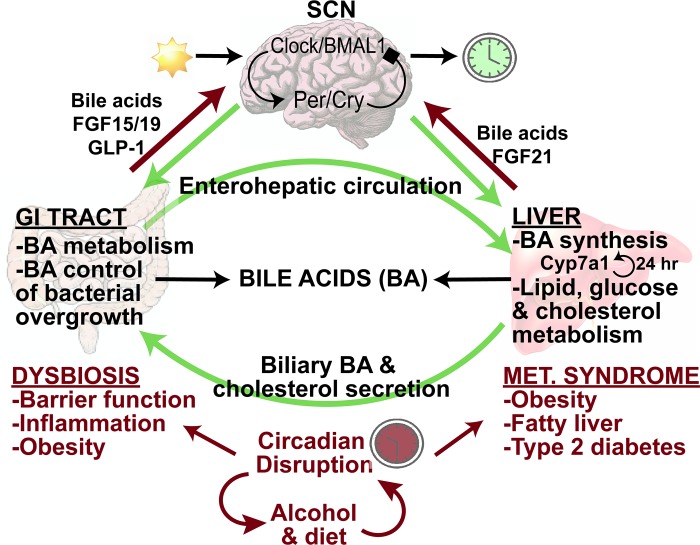Fig. 4.
Bile acids (BAs) in the gut-liver-brain axis and circadian rhythms. Circadian rhythms are generated and maintained by the suprachiasmatic nucleus (SCN) via rhythmic transcription and translation of core clock genes. Clock and Bmal1 induce Period (Per) and Cryptochrome (Cry), which feed back to inhibit Clock/Bmal1. All peripheral organs have molecular clocks that are synchronized to the SCN to regulate rhythms in lipid, glucose, and cholesterol metabolism, as well as cholesterol 7α-hydroxylase (CYP7A1) expression in the liver. In the gastrointestinal (GI) tract, gut bacteria metabolize bile acids, which control bacterial overgrowth. Dysbiosis, caused by circadian disruption, alcohol, or high-fat diets, impairs intestinal barrier function and causes inflammation. Dysbiosis also contributes to obesity, fatty liver, and type 2 diabetes mellitus. In the gut-to-brain axis, glucagon-like peptide-1 (GLP-1), FGF19, and bile acids mediate signaling cross-talk between the gut and brain, and FGF21 and bile acids mediate signaling cross-talk between the brain and liver.

